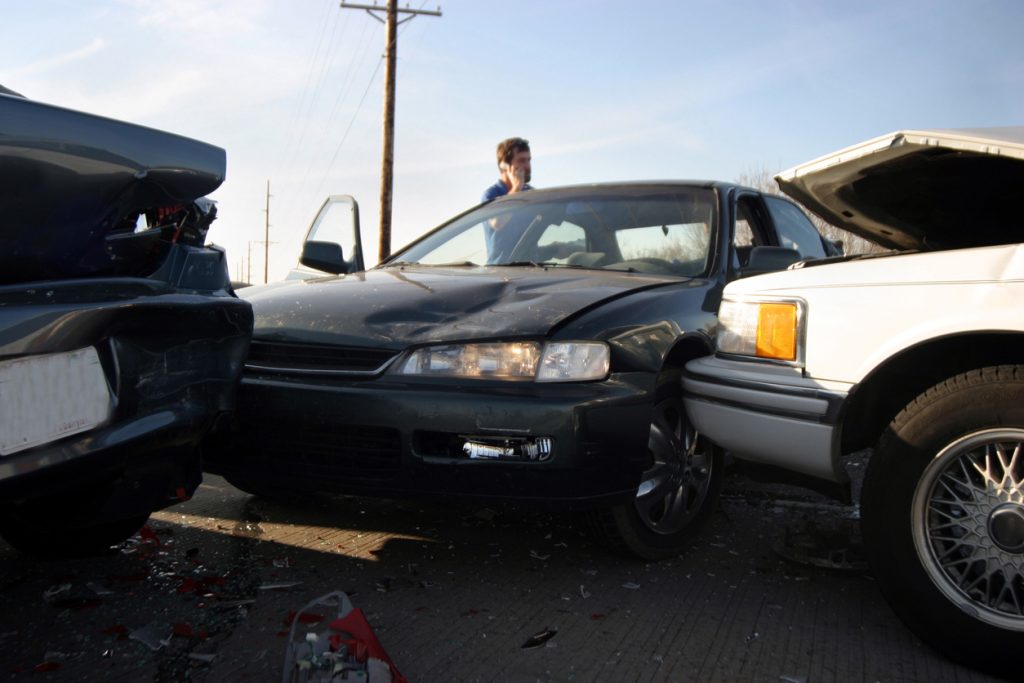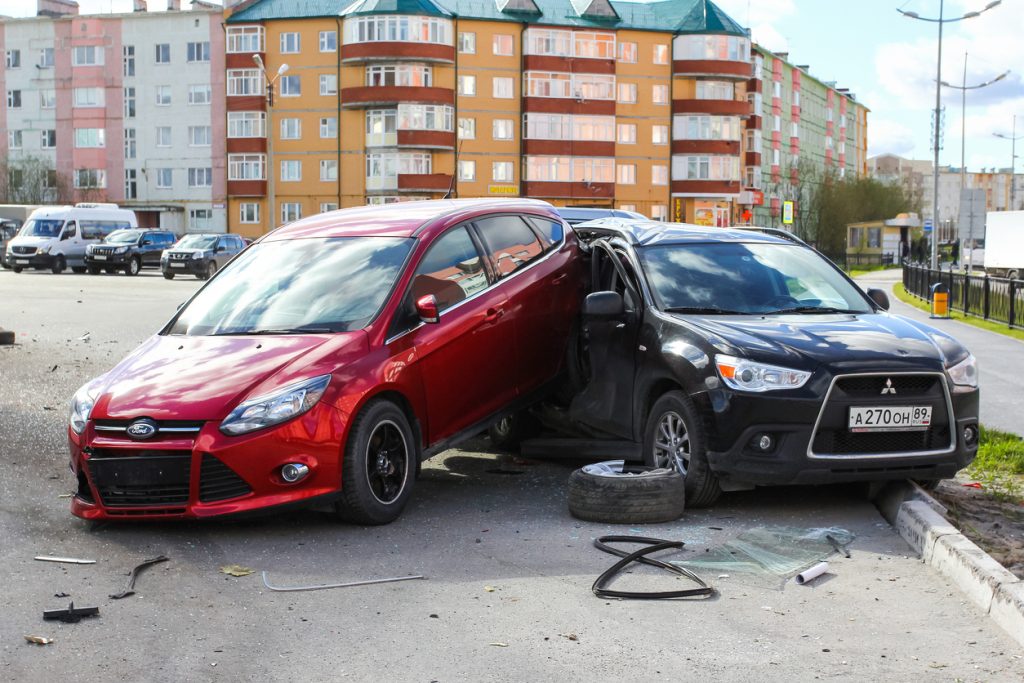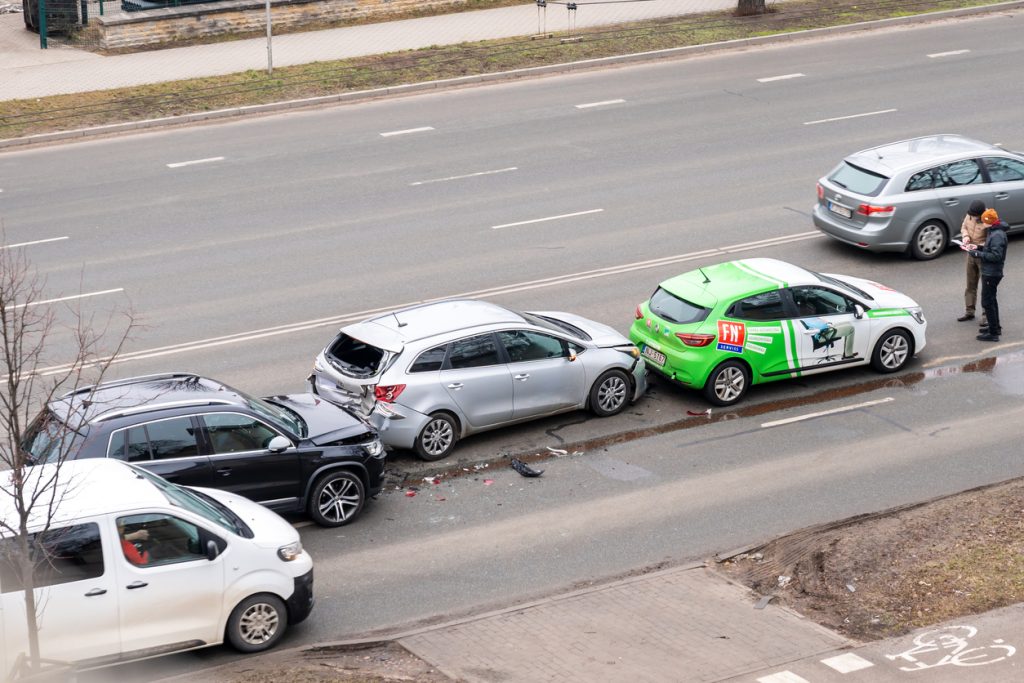- 5 Oct 2025

When drivers find themselves in an Oregon multi vehicle accident, the aftermath can be far more complicated than a typical two-car collision. Multiple drivers, varying accounts of what happened, and overlapping insurance claims create a legal and financial puzzle. In these complex situations, insurance providers and state laws determine how compensation is distributed, but drivers often face challenges in protecting their rights and avoiding unfair blame.
Understanding how an Oregon multi vehicle accident impacts insurance claims is essential for anyone navigating the process. From liability rules to insurance company negotiations, knowing what to expect helps drivers avoid mistakes that could jeopardize their compensation. This article explores the critical factors that shape these claims and the steps drivers should take to safeguard their interests.
Why Oregon Multi Vehicle Accident Claims Are Different
The structure of an insurance claim following an Oregon multi vehicle accident differs greatly from a standard two-car collision. With more than two drivers involved, insurers must evaluate multiple perspectives, reconstruct the sequence of events, and establish degrees of liability. Oregon law follows a comparative negligence standard, meaning each driver’s percentage of fault determines how damages are allocated.
For instance, if one driver rear-ends another and that impact pushes the second vehicle into a third, determining liability requires tracing the chain of collisions. In this scenario, insurers must analyze whether the first driver alone caused the crash or whether other drivers contributed by following too closely or failing to respond appropriately.
Because of these complexities, claims are rarely straightforward. Instead, drivers are often entangled in lengthy negotiations, evidence collection, and sometimes disputes that escalate into litigation.
The Role of Insurance in an Oregon Multi Vehicle Accident
Insurance policies are the first line of recovery after an Oregon multi vehicle accident. Every driver involved may rely on liability insurance, personal injury protection, or uninsured motorist coverage, depending on their policy terms. Oregon requires drivers to maintain minimum coverage that includes liability and personal injury protection, which plays a key role in multi-car accidents.
Liability coverage addresses the damages caused to other drivers, while personal injury protection assists with immediate medical costs regardless of fault. When several vehicles are involved, multiple claims may be filed simultaneously, and insurers must distribute payments based on each driver’s share of responsibility.
This system can create delays and disputes, especially when coverage limits are insufficient to fully compensate all parties. If damages exceed available insurance, drivers may face personal liability or pursue recovery through civil lawsuits.
Establishing Fault in an Oregon Multi Vehicle Accident
One of the most contested aspects of an Oregon multi vehicle accident is establishing fault. Insurance adjusters rely on police reports, eyewitness statements, accident reconstruction, and sometimes surveillance footage to determine how the collision unfolded.
Oregon’s modified comparative negligence rule means that a driver can recover damages as long as they are less than 51% responsible for the accident. However, any compensation awarded is reduced in proportion to the driver’s percentage of fault. This system incentivizes each party to minimize their role in causing the accident, leading to disputes and conflicting claims.
In chain-reaction crashes, liability can extend across multiple drivers. For example, one driver may have been speeding, another distracted, and a third may have failed to maintain safe distance. Each factor contributes to the overall outcome, making the determination of responsibility highly fact-specific.
Insurance Company Tactics After an Oregon Multi Vehicle Accident
When insurers investigate an Oregon multi vehicle accident, they aim to limit payouts by challenging claims or shifting fault percentages. Drivers may encounter requests for detailed statements, pressure to settle quickly, or even denials based on technicalities.
Because multiple policies and parties are involved, negotiations often become a tug-of-war between insurers. Each company attempts to protect its financial interest, and drivers may be caught in the middle of disputes they cannot easily resolve. This is particularly true when damages exceed policy limits, as insurers may attempt to minimize liability exposure.
Drivers should be cautious when providing statements or signing settlement agreements. A premature admission or acceptance of a low settlement can undermine a claim, particularly when medical expenses or long-term damages are not yet fully known.
Legal Standards Governing Oregon Multi Vehicle Accident Claims
Oregon’s laws governing comparative negligence and minimum insurance requirements create the framework for handling multi-car collisions. According to the Oregon Department of Transportation crash data, multi-vehicle accidents account for a significant portion of roadway incidents, highlighting the importance of liability allocation in these cases.
When liability is unclear, insurers and courts may rely on legal precedents and statutory requirements. Evidence such as skid marks, vehicle damage, and accident scene reconstructions all contribute to determining fault. Importantly, drivers found more than 50% at fault are barred from recovering damages, a rule that greatly impacts the outcome of these cases.
Common Insurance Disputes in Oregon Multi Vehicle Accident Cases
An Oregon multi vehicle accident often gives rise to disputes between drivers and insurers. Some of the most frequent issues include conflicting witness statements, disagreements over the sequence of events, and disputes about whether damages exceed coverage limits.
Coverage disputes are particularly common when multiple injured parties seek compensation from the same liability policy. In such cases, insurers may prorate payments, leaving some drivers with insufficient recovery. Additionally, disagreements about medical treatment costs and lost income often extend the claim process.
When negotiations stall, disputes may escalate to litigation. Courts then determine liability percentages and award damages accordingly, but this process can take months or even years to resolve.
Steps Drivers Should Take After an Oregon Multi Vehicle Accident
The aftermath of an Oregon multi vehicle accident requires immediate action. Drivers should focus first on safety and medical care, followed by securing documentation that will support insurance claims. Police reports are especially critical, as they serve as official records of the crash and heavily influence insurance determinations.
Gathering photographs, eyewitness accounts, and any available video footage helps strengthen a claim. Promptly notifying insurers is also essential, but drivers must remain careful about what information they provide. Inconsistencies or admissions of partial fault can be used against them during negotiations.
Drivers may also benefit from reviewing resources such as which driver is responsible during an Oregon multi vehicle crash to better understand how liability is determined in these complex situations.
The Long-Term Impacts of an Oregon Multi Vehicle Accident
Beyond immediate property damage and medical bills, an Oregon multi vehicle accident can have lasting financial and personal consequences. Insurance premiums often rise significantly after a claim, even when a driver is not primarily at fault. Prolonged disputes may also delay compensation for necessary treatments and vehicle repairs.
Furthermore, the psychological toll of being involved in a multi-vehicle collision should not be overlooked. Stress, anxiety, and uncertainty about financial recovery all weigh heavily on those involved. Understanding the legal and insurance framework can provide clarity, but drivers often face ongoing challenges long after the accident itself.
Conclusion: Navigating Oregon Multi Vehicle Accident Insurance Claims
An Oregon multi vehicle accident presents one of the most complex claim scenarios drivers can face. With multiple parties, conflicting stories, and insurance companies protecting their own interests, the process of securing fair compensation is rarely straightforward.
By understanding Oregon’s comparative negligence laws, recognizing insurance company tactics, and documenting every detail of the crash, drivers can better position themselves to navigate the claims process. Awareness of these challenges helps prevent missteps that could reduce recovery or increase personal liability.
While each case is unique, the principles that govern multi-car collisions in Oregon remain consistent. Drivers who understand these rules are better prepared to face the complexities of insurance claims after a serious crash.
Recent posts
- 5 Oct 2025
- 3 Oct 2025
- 3 Oct 2025
Categories
- Accident & Injury Law (54)
- AI (1)
- Copyright Law (1)
- Criminal & Civil Law (17)
- Disability Law (2)
- Driving Law (2)
- Employment Law (1)
- Estate Planning (2)
- Family & Relationship Law (29)
- Food and Drink (2)
- Gas Exposure (1)
- Health (1)
- Immigration Law (2)
- Injury Claim (1)
- Insurance Law (7)
- Legal (40)
- Lemon Law (4)
- Mediation (3)
- Medical Malpractice (1)
- Property & Business Law (9)
- Severance Agreement (1)
- Travel and Leisure (1)
- Uncategorized (8)
- Worker Compensation (2)



